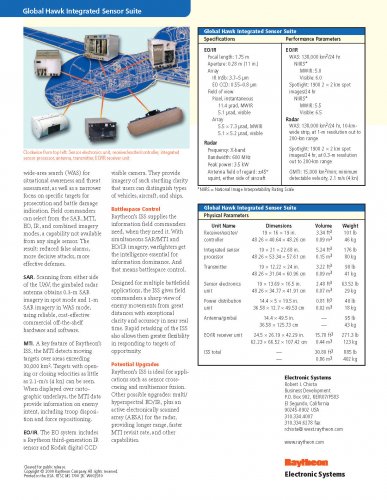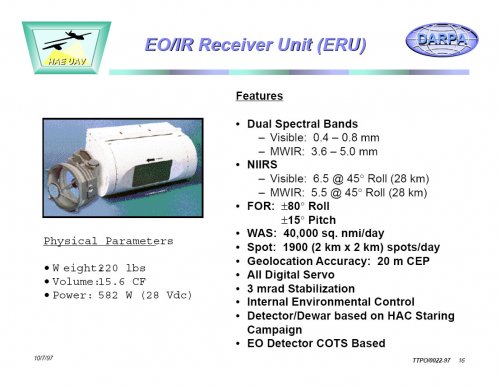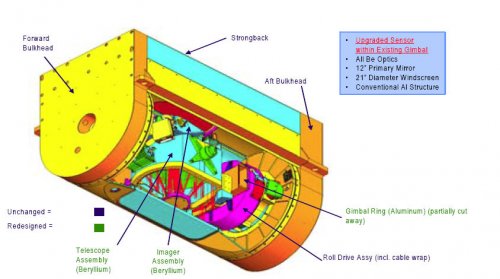The Raytheon-supplied EO/IR system, mounted in the chin of the Global Hawk, combines a Recon/Optical camera with a third-generation Raytheon IR sensor. The EO system uses a commercial, 1,024 x 1,024 pixel Kodak digital silicon charge-coupled device (CCD) camera, while the IR sensor has a 640 x 480 pixel 3-5μm indium antimonide detector derived from Raytheon’s common-module forward-looking infrared (FLIR) system.
Both EO and IR sensors are fed by a fixed 1.75m focal-length reflecting telescope with a beam splitter and 254mm reflecting mirror that forms the main area of improvement in the Block 20. “We’ve not changed the camera unit. The enhancement is a change in the material of the mirror, which can be more finely polished, and the introduction of a real-time precise focus capability,” says Mohr.
Neither system has the 6,000-plus pixel width needed to provide the required 1m resolution in a single exposure, so the telescope scans continuously sideways while an internal mirror back-scans to freeze the image on the sensor. This “step-stare” approach means the mirror returns to the start point every one-thirtieth of a second, while the small patches are assembled to generate a larger picture. “This means the system has a 30Hz capability, which is practically a video,” he adds.
The entire system uses a gimbal mount derived from a Raytheon AAQ-16 FLIR turret that can roll ±80° or move ±15° in pitch and yaw. Stabilised to 3mrad, compared with the more normal 20mrad, the system can cover up to 104,000km2 a day in wide-area search mode, or generate up to 1,900 4km2 spots in spot mode. Dual-band coverage is provided in the visible (0.4-0.8μm) and IR (3.6-5μm) wavebands. Imagery from the sensor suite is sent via the Ku-band link originally developed to transmit at up to 50Mb/s, though projected performance now ranges between 1.5Mb/s and 47.5Mb/s.



